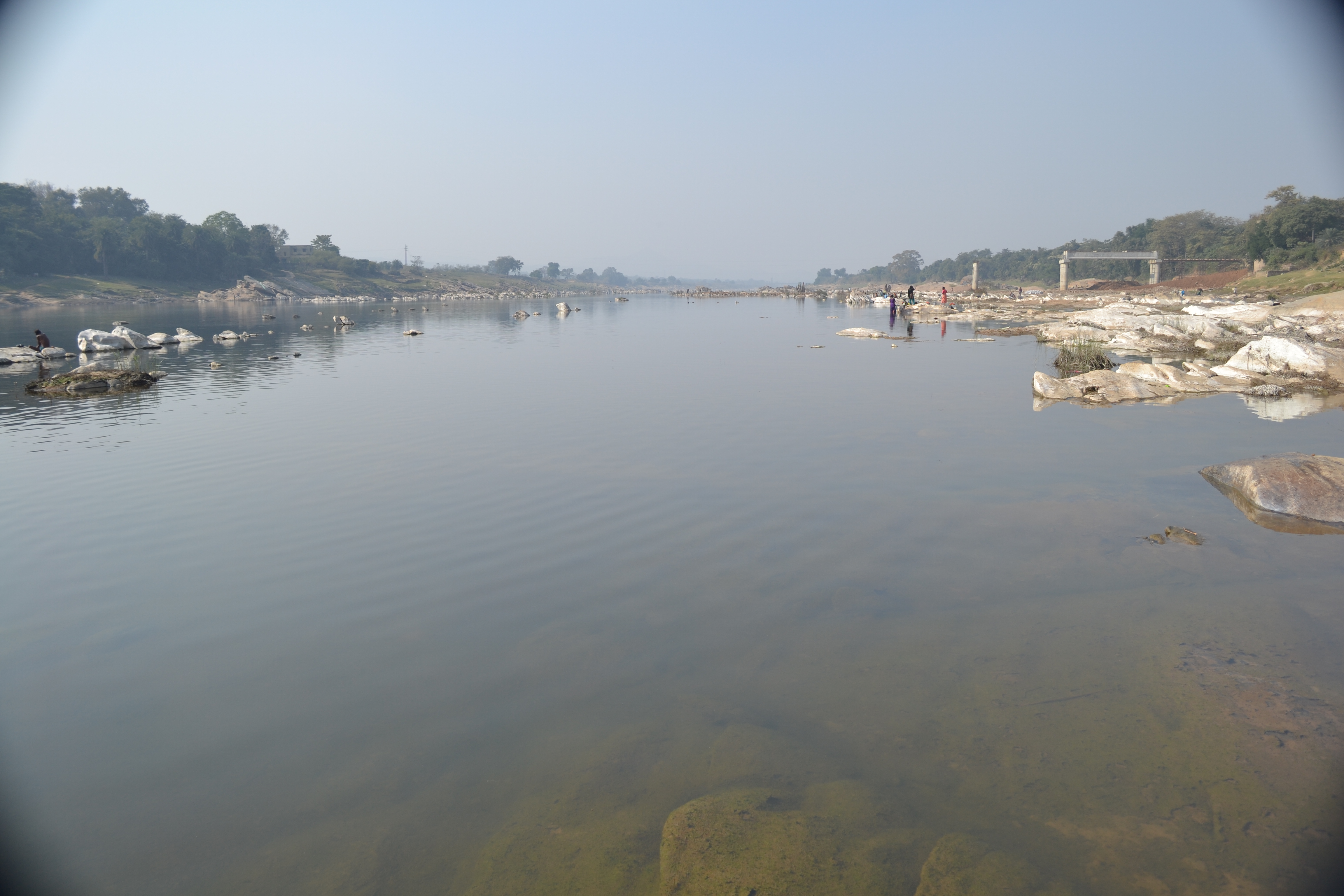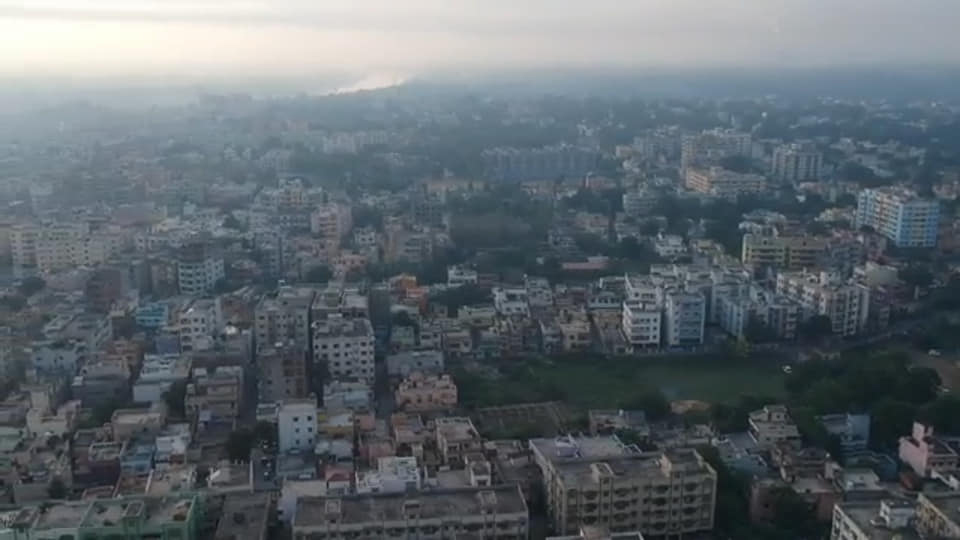|
Ghatshila Block
Ghatshila block is a CD block that forms an administrative division in the Ghatshila subdivision of East Singhbhum district, in the Indian state of Jharkhand. History The laying of the foundation stone of the steel plant by Tata Steel (then known as Tata Iron and Steel Company) in 1907 at Sakchi Kalimati in Singhbhum district marked the beginning of the industrialisation of the area. The first police station in the area was opened in 1912 at Jugsalai. The Kalimati Sakchi village was renamed ‘Jamshedpur’ in 1917. Dhalbhum subdivision was created in 1920 with Jamshedpur as headquarters. Jamshedpur Notified Area was established in 1924. East Singhbhum district, with Jamshedpur as headquarters, was set up in 1990. Ghatshila was earlier the headquarters of the Rajas of Dhalbhum. Ghatshila block was established in 1962 with headquarters at Ghatshila. Geography Ghatshila is located at . “The district forms a part of the Chota Nagpur Plateau and is a hilly upland tra ... [...More Info...] [...Related Items...] OR: [Wikipedia] [Google] [Baidu] |
Burudi
Burudi is a village in the Ghatshila CD block in the Ghatshila subdivision of the East Singhbhum district, Jharkhand, India. Geography Location Burudi is located at . Burudi Dam is from Ghatsila railway station, from Jamshedpur, and from Kolkata. Burudi Dam Burudi Dam was built in the scenic surroundings of Dalma Hills during the British Raj. Binda Mela (fair), held for a fortnight in October, presents Santali handicrafts, paintings, jewellery, lamps, pots and other rural items. Dharagiri Falls, about in height, and Phuldungri Hills, both popular tourist spots, are in the same direction as Burudi from Ghatshila. Area overview The area shown in the map “forms a part of the Chota Nagpur Plateau and is a hilly upland tract”. The main rivers draining the district are the Subarnarekha and the Kharkai. The area lying between Jamshedpur and Ghatshila is the main industrial mining zone. The rest of the district is primarily agricultural. In the district, as of 2011 ... [...More Info...] [...Related Items...] OR: [Wikipedia] [Google] [Baidu] |
Community Development Blocks In India
In India, a Community development block (CD block) or simply Block is a sub-division of Tehsil, administratively earmarked for planning and development. The area is administered by a Block Development Officer (BDO), supported by several technical specialists and village-level workers. A community development block covers several gram panchayats, the local administrative units at the village level. Nomenclature Only in the state of West Bengal are CD blocks considered the third level administrative units (equal to tehsils in North India. Elsewhere, tehsils are also called Talukas in the Western Indian states of Goa, Gujarat, Maharashtra and South Indian states of Karnataka, Kerala, and Tamil Nadu. In Arunachal Pradesh and Nagaland, the term Circles are used, while Sub-divisions are present in the Eastern Indian states of Bihar, Jharkhand, Assam, and most of Northeast India (Manipur, Meghalaya, Mizoram, Sikkim and Tripura). In Andhra Pradesh and Telangana, a newer form of admini ... [...More Info...] [...Related Items...] OR: [Wikipedia] [Google] [Baidu] |
Bandwan (community Development Block)
Bandwan is a community development block (CD block) that forms an administrative division in the Manbazar subdivision of the Purulia district in the Indian state of West Bengal. History Background The ''Jaina Bhagavati-Sutra'' of the 5th century AD mentions that Purulia was one of the sixteen mahajanapadas and was a part of the kingdom known as Vajra-bhumi in ancient times. In 1833, the Manbhum district was carved out of the Jungle Mahals district, with headquarters at Manbazar. In 1838, the headquarters was transferred to Purulia. After independence, when Manbhum district was a part of Bihar, efforts were made to impose Hindi on the Bengali-speaking majority of the district and it led to the Bengali Language Movement (Manbhum). In 1956, the Manbhum district was partitioned between Bihar and West Bengal under the States Reorganization Act and the Bihar and West Bengal (Transfer of Territories) Act of 1956. Maoist activities Banduan, along with certain other areas such as Manbazar ... [...More Info...] [...Related Items...] OR: [Wikipedia] [Google] [Baidu] |
Kharkai River
The Kharkai River is a river in eastern India. It is one of the major tributaries of the Subarnarekha River. It flows through Adityapur region of Jamshedpur It arises in Mayurbhanj district, Odisha, on the north slopes of Darbarmela Parbat and the western slopes of Tungru Pahar,Jamshedpur quadrandle NF-45-6, October 1959, India and Pakistan 1:250,000, Series U502, U.S. Army Map Service of the Simlipal Massif. It flows past and heads north to about Karan, Pradyumna P. (July 1953) "Economic Regions of Chota Nagpur, Bihar, India" ''Economic Geography ... [...More Info...] [...Related Items...] OR: [Wikipedia] [Google] [Baidu] |
Chota Nagpur Plateau
The Chota Nagpur Plateau is a plateau in eastern India, which covers much of Jharkhand state as well as adjacent parts of Chhattisgarh, Odisha, West Bengal and Bihar. The Indo-Gangetic plain lies to the north and east of the plateau, and the basin of the Mahanadi river lies to the south. The total area of the Chota Nagpur Plateau is approximately . Etymology The name ''Nagpur'' is probably taken from Nagavanshis, who ruled in this part of the country. ''Chhota'' (''small'' in Hindi) is the misunderstood name of "Chuita" village in the outskirts of Ranchi, which has the remains of an old fort belonging to the Nagavanshis.Sir John Houlton, ''Bihar, the Heart of India'', pp. 127-128, Orient Longmans, 1949. Formation The Chota Nagpur Plateau is a continental plateau—an extensive area of land thrust above the general land. The plateau has been formed by continental uplift from forces acting deep inside the earth. The Gondwana substrates attest to the plateau's ancient origin. ... [...More Info...] [...Related Items...] OR: [Wikipedia] [Google] [Baidu] |
Dhalbhum
Dhalbhum was the name given to parganas Supur and Ambikanagar in the Khatra area of present Bankura district in the Indian state of West Bengal.O’Malley, L.S.S., ICS, ''Bankura'', ''Bengal District Gazetteers'', pp. 194-195, 1995 reprint, first published 1908, Government of West Bengal In the course of time, Dhalbhum kingdom was spread over a much wider area, across the western part of adjoining Midnapore district and the eastern and south-eastern parts of Singhbhum district in present-day Jharkhand.Ghosh, Binoy, ''Paschim Banger Sanskriti'', (in Bengali), part II, 1978 edition, p. 56, Prakash Bhaban History According to tradition, the original Raja of Dhalbhum was Chintamoni Dhoba, a person of Rajak caste. The ''pai'' or grain measure used in these parganas was for a long time called ''Chintaman pai''. Legend goes on to say that Dhalbhum was wrested from him by Jagannath Deb of Dholpur in Rajputana. After 32 generations Supur Raj, as it was locally called, was divided in con ... [...More Info...] [...Related Items...] OR: [Wikipedia] [Google] [Baidu] |
Dhalbhum Subdivision
Dhalbhum subdivision is an administrative subdivision of the East Singhbhum district in the Kolhan division in the state of Jharkhand, India. History Dhalbhum subdivision was created in 1920 with Jamshedpur as headquarters. Administrative set up The district consists of two subdivisions - (1) Dhalbhum subdivision with Patamda, Boram, Golmuri-cum-Jugsalai and Potka CD blocks, and (2) Ghatshila subdivision with Ghatshila, Dhalbhumgarh, Musabani, Dumaria, Gurbandha, Chakulia and Baharagora CD blocks. The subdivisions of Purbi Singhbhum district have the following distinctions: Note: Calculated on the basis of block-wise data available. Police stations Police stations in the Dhalbhum subdivision are at: # Bagbera # Birsanagar # Bistupur # Boram # Govindpur # Jugsalai # Kadma # Mango # Patamda # Potka # Parsudih # Sakchi # Azadnagar # Burmamines # Golmuri # Kamalpur # Olidih # Sidhagora # Sitaramdera # Sonari # Sundarnagar # Sspur #Telco Blocks ... [...More Info...] [...Related Items...] OR: [Wikipedia] [Google] [Baidu] |
Jamshedpur
Jamshedpur (, ) or Tatanagar is the largest and most populous city in Jharkhand and the first planned industrial city in India. It is a Notified Area Council and Municipal Corporation and also the headquarter of the East Singhbhum district. It is a popular tourist destination known for its forests, ancient temples and royal palaces. It was ranked as the cleanest city of India in the year 2019. It was founded by Jamsetji Tata, founder of the Tata Group, and was named after him. It was established in 1919. Jamshedpur was ranked as the cleanest city of India in 2020 by Swach Survekshan in 2020. Jamshedpur was ranked the 7th cleanest city of India in 2010. The city is also ranked as 2nd in India in terms of quality of life. Jamshedpur is the 84th fastest growing city in the world according to City Mayors Foundation. It is the headquarters of the East Singhbhum district of Jharkhand and is the 36th – largest urban agglomeration and 72nd largest city in India by population. It i ... [...More Info...] [...Related Items...] OR: [Wikipedia] [Google] [Baidu] |
Jugsalai
Jugsalai is a township and business center adjacent to Tatanagar Railway Station, Jamshedpur and a municipality in the Dhalbhum subdivision of the Purbi Singhbhum district in the Indian state of Jharkhand. It is often referred as a wholesale market of Jamshedpur. Geography Location Jugsalai is located at . Jugsalai has an average elevation of 140 metres (459 feet). Jamshedpur Urban Agglomeration With its recognition as an industrial town as early as the 1911 census, Jamshedpur was set on the road of steady population growth, as large number of emigrants flocked in for work opportunities. While in the earlier decades the central nucleus grew, in the later decades towns around Jamshedpur grew rapidly. In 2011, Jamshedpur Urban Agglomeration included 13 urban centres, with a total population of 1.3 million people. However, in more recent years, Jamshedpur UA “has lacked the growth and development observed around other similar industrial towns in western and souther ... [...More Info...] [...Related Items...] OR: [Wikipedia] [Google] [Baidu] |
Sakchi
Sakchi was the village in north eastern India territory of Singhbhum which was selected by Jamsetji Tata to be the location of a planned steel city, which in 1919 became Jamshedpur. Sakchi is now part of the city between the Tata Steel site and the river Subarnarekha. Then it was known as Kalimati. Due to the presence of iron ore, river water and sand, Jamsetji Tata decided to establish TISCO (Tata Iron and Steel Company Limited) there. The company is now known as Tata Steel Ltd. Even today running through Sakchi is the Kalimati Road. During British India, a railway line connecting Jamshedpur to Howrah (Calcutta) was started. Jamshedpur is in the Indian mineral-rich state of Jharkhand which was earlier in Bihar as South Bihar. As Tata Steel was established, the first planned urban settlement started in Sakchi Area and it included businessmen (Gujaratis, Parsis, Punjabis), servicemen (Biharis, Bengalis, Oriyas, Telugus, Tamils, Malayalis). Many people who then migrated from W ... [...More Info...] [...Related Items...] OR: [Wikipedia] [Google] [Baidu] |



